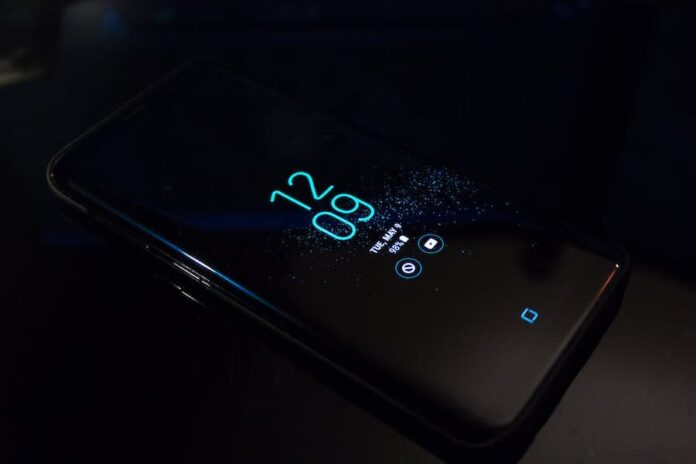In the world of smartphones and Android devices, the expandable storage option provided by SD (Secure Digital) cards is a blessing. It allows us to store a multitude of photos, videos, apps, and documents without worrying about running out of space. However, there are times when our Android devices fail to recognize the SD card, leaving us puzzled and frustrated. If you’ve ever wondered, “Why my SD card is not showing in Android?” you’re not alone.
In this comprehensive guide, we will explore the common reasons behind this issue and provide you with practical troubleshooting steps to help you get your SD card working smoothly again. Whether you’re a tech-savvy user or a novice, you’ll find valuable insights here to resolve the problem and ensure your Android device recognizes your SD card.
Why My SD Card Is Not Showing In Android?
An SD card may not show up on an Android device due to various reasons. First, ensure it’s correctly inserted. Corrupted or damaged cards won’t be recognized. Compatibility issues, such as card type and size, can also be a problem. Proper formatting is essential for recognition. Software glitches or a faulty card reader can cause issues too. Restart, clear the cache, or perform a factory reset to troubleshoot. If problems persist, consult a professional for hardware diagnosis and repair.
Common Reasons Why Your SD Card Is Not Showing In Android
Several factors can contribute to your SD card not being recognized by your Android device. Let’s explore these common reasons:
1. Incorrect Insertion:
Sometimes, the problem is as simple as the SD card not being inserted correctly. It’s essential to ensure that the card is properly seated in the card slot. Remove and reinsert it to rule out this possibility.
2. Dirty Or Damaged SD Card:
Dust and debris can accumulate on the SD card’s connectors over time, leading to poor contact with the device. Additionally, physical damage to the card, such as a bent or broken pin, can prevent it from being detected.
3. File System Compatibility:
Android devices are compatible with various file systems, including FAT32, exFAT, and NTFS. If your SD card uses a file system that is not supported by your device, it may not be recognized.
4. Corrupted Or Unreadable SD Card:
Data corruption can occur due to improper ejection, power interruptions, or malware. If the SD card becomes corrupted, your Android device may not be able to read it.
5. Software Updates And Bugs:
Sometimes, issues with SD card recognition can be linked to software updates or bugs in your Android operating system. These issues may be resolved with subsequent updates or patches.
6. SD Card Compatibility:
Not all SD cards are created equal. Some older Android devices may have limitations when it comes to the size and type of SD cards they can support. Check your device’s specifications to ensure compatibility.
7. Locked SD Card:
SD cards often come with a physical lock switch that can prevent data from being written to or deleted from the card. Make sure this switch is in the unlocked position.
Now that we’ve identified some of the common reasons behind the issue let’s move on to the practical steps you can take to troubleshoot and resolve the problem.
Troubleshooting Steps To Fix The Issue
- Check For Physical Damage: Begin by inspecting your SD card for any visible damage. Look for bent pins, scratches, or cracks. If you find any, the card likely needs to be replaced.
- Clean The SD Card: If there’s no physical damage, clean the SD card’s connectors carefully using a soft, lint-free cloth or an alcohol wipe. This can help improve the connection between the card and your Android device.
- Reinsert The SD Card: Remove the SD card from your device and reinsert it firmly into the card slot. Ensure that it clicks into place securely.
- Try A Different Card Slot: Some Android devices have multiple card slots. If your SD card isn’t recognized in one slot, try inserting it into another slot (if available).
- Check Compatibility: Verify that your SD card is compatible with your Android device in terms of both size and file system. If necessary, format the card to a compatible file system on a computer before reinserting it into your device.
- Unlock The SD Card: If your SD card has a physical lock switch, make sure it is in the unlocked position. Locked cards cannot be written to or read by the device.
- Reboot Your Device: Sometimes, a simple reboot can resolve software-related issues. Turn off your Android device, remove the SD card, wait a few moments, and then reinsert it before powering the device back on.
- Update Your Android OS: Check for any available software updates for your Android device. Installing the latest updates can address compatibility and bug issues that may be causing the SD card problem.
- Use A Card Reader: If none of the above steps work, try using a card reader to connect the SD card to a computer. If the card is recognized on the computer, it may be a problem with your Android device.
- Backup And Format: If all else fails and your SD card is still not recognized, consider backing up the data on the card to a computer and then formatting it. Formatting can sometimes resolve corruption issues.
What Is The Role Of SD Cards In Android?
Exploring the function of SD cards in Android reveals their crucial role in enhancing the storage capacity and versatility of Android devices. SD cards, short for Secure Digital cards, are removable storage devices that can be inserted into smartphones and tablets running the Android operating system. These cards come in various capacities, allowing users to expand their device’s storage significantly.
One primary function of SD cards in Android is to provide additional storage space for a wide range of data, including photos, videos, music, apps, and documents. This extra storage is particularly valuable for users with devices with limited built-in storage, as it allows them to store more content without constantly worrying about running out of space.
Furthermore, SD cards can be used to transfer data between devices quickly. You can easily move files from your Android device to a computer or another Android device by simply removing the SD card and inserting it into the target device’s card reader. This feature is particularly handy for sharing files or creating backups.
In addition to storage expansion and data transfer, some Android devices also allow users to configure their SD cards as “adoptable storage,” effectively merging them with internal storage. This feature provides a seamless experience, as apps and data can be stored on the SD card as if it were part of the internal storage, offering even more flexibility to users.
Exploring the function of SD cards in Android reveals their essential role in expanding storage capacity, facilitating data transfer, and enhancing the overall usability of Android devices. Whether you need extra space for media, a convenient way to share files, or an integrated storage solution, SD cards play a vital role in optimizing the Android experience.
Conclusion
In conclusion, encountering the issue of your SD card not showing on your Android device can be frustrating, but it’s not uncommon. By understanding the possible reasons behind the problem and following the troubleshooting steps outlined in this article, you can increase your chances of resolving the issue and getting your SD card back in action. To ensure your Android device’s compatibility with your SD card, handle it with care, keep it clean, and regularly back up your data. If the issue persists, seek professional help or consider replacing the card. With patience and persistence, you can overcome the SD card not showing in Android and continue using the device’s expanded storage.





